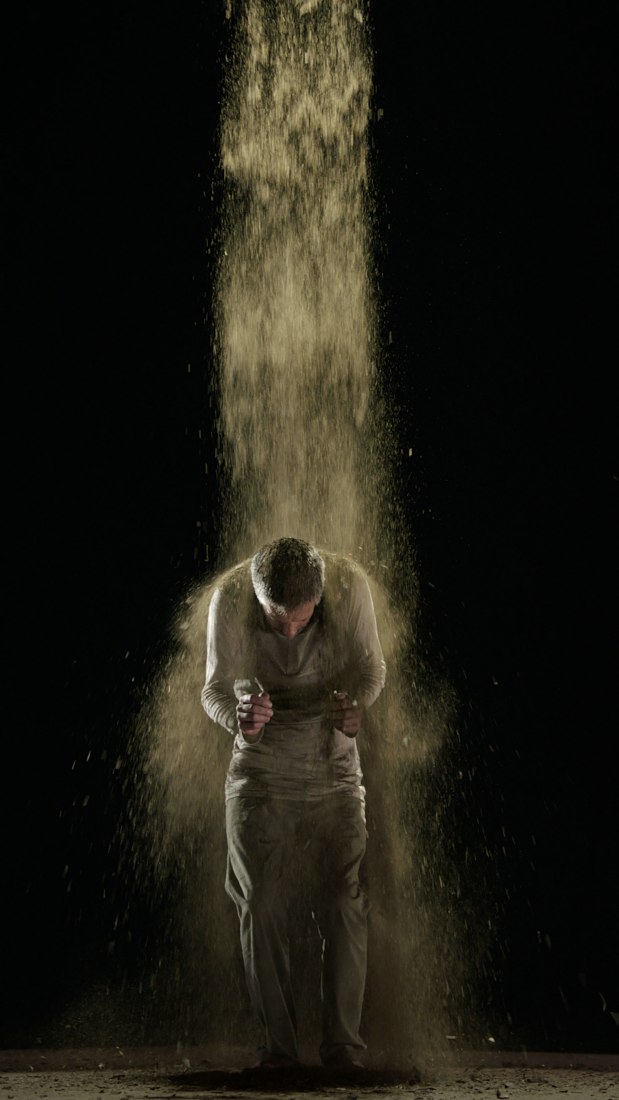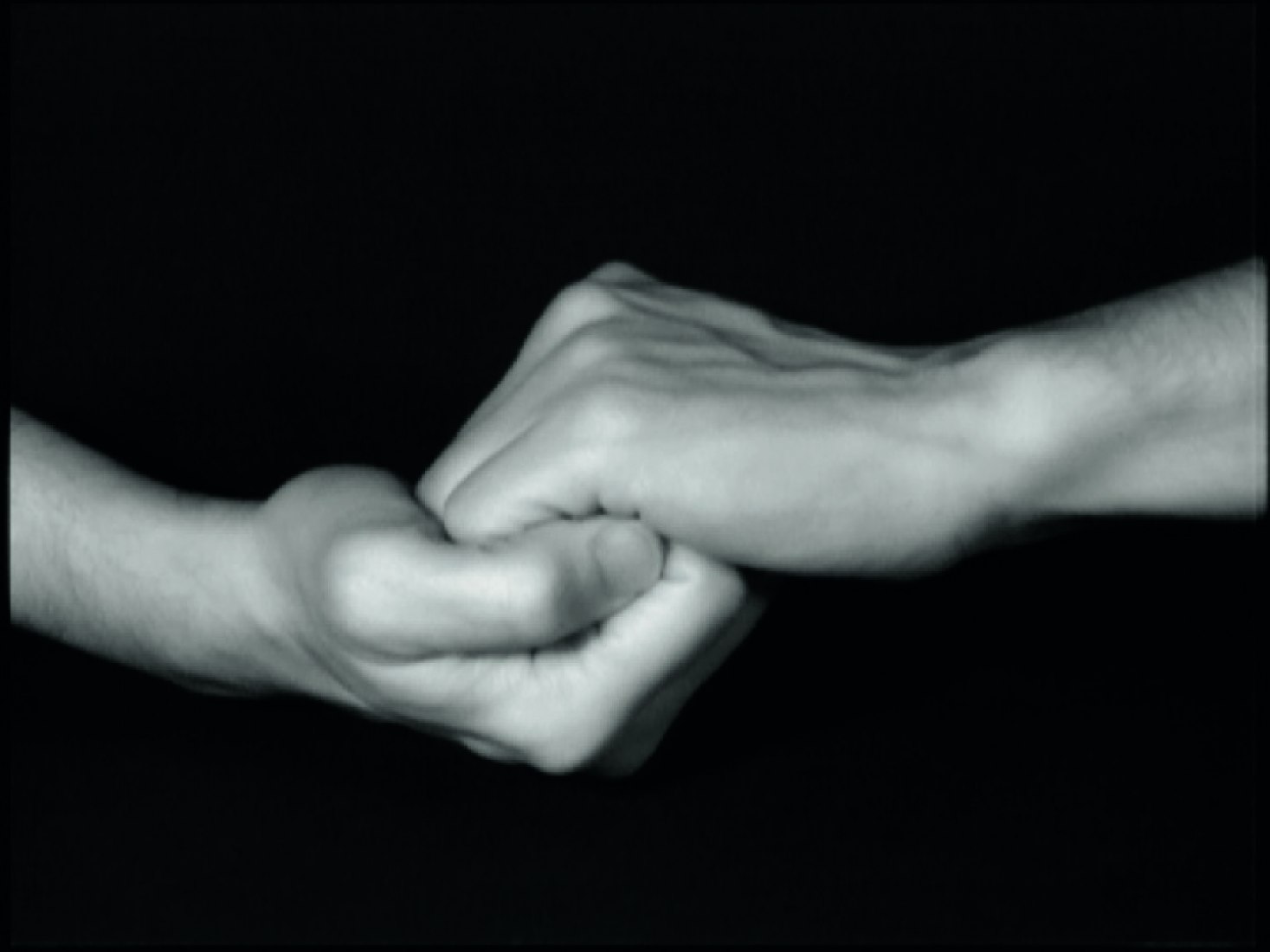The exhibition, curated by the director of Bill Viola Studio, Kira Perov, offers a broad journey through the career of the artist, whose work has evolved in parallel with the development of video technology.
The exhibition includes works from the seventies such as The Reflecting Pool (1977-1979), in which Viola explores, using her own body, the possibilities that electronic image can offer, until now with works from the Martyrs series (2014) where incorporates the most advanced technology making very complex productions with actors and sophisticated camera effects.
The use of techniques such as slow motion or slow motion and loop mounting allow the viewer to see in detail the action and expression of emotions on the faces of their actors, thus revealing their inner world.
Life and death, time and water and spirituality
Viola's work is characterized by being full of symbols and references that are repeated continuously and that he uses to express universal concepts such as death, life, spirituality, the passage of time, space or loneliness run through his work and they evolve with her.
In his first works, Viola records his interest in the notion of time, an example of which are The Reflecting Pool, where he experiments with the disintegration of the figure throwing himself into a pool in a forest and where “time extends and is suspended for a series of actions that are seen only in the reflection of water ”or Incrementation (1996), a self-portrait that tells each of his breaths, where the artist faces his own mortality. That fascination with time is also appreciated in the Heaven and Earth sculpture (1992), where it confronts, through a face of an old woman and a newborn, the stages of life and death.
Water is another recurring element in his work as a representation of purity, serenity, calm, redemption or peace. In Ablutions (2015), Viola shows a slowed foreground a man and a woman washing their hands in a purifying act and in Self Portrait, Submerged (2013) the artist lying in a river with his eyes closed, where the water is shown as essential element of life, of change, of the passage of time in its continuous flow, expressing in turn the becoming, the birth or the reflection.
The inspiration in the art of the past, and especially of the Renaissance and the Low Middle Ages, as well as the influences of spiritual traditions such as Zen Buddhism, Islamic Sufism or Christian mysticism are also collected in Viola's video installations. From the allusion to the ecclesiastical altarpieces in Catherine's room (2001), where it represents five intimate moments of a woman doing daily activities during a day to the four works of the series “Martyrs”, derived from the commission made for the cathedral of Saint Paul de London in 2014, in which it shows through four screens the struggle with the elements earth, air, fire and water before the final acceptance of death. The four martyrdoms that symbolize concepts such as action, strength, perseverance, resistance and sacrifice.
The exhibition includes works from the seventies such as The Reflecting Pool (1977-1979), in which Viola explores, using her own body, the possibilities that electronic image can offer, until now with works from the Martyrs series (2014) where incorporates the most advanced technology making very complex productions with actors and sophisticated camera effects.
The use of techniques such as slow motion or slow motion and loop mounting allow the viewer to see in detail the action and expression of emotions on the faces of their actors, thus revealing their inner world.
Life and death, time and water and spirituality
Viola's work is characterized by being full of symbols and references that are repeated continuously and that he uses to express universal concepts such as death, life, spirituality, the passage of time, space or loneliness run through his work and they evolve with her.
In his first works, Viola records his interest in the notion of time, an example of which are The Reflecting Pool, where he experiments with the disintegration of the figure throwing himself into a pool in a forest and where “time extends and is suspended for a series of actions that are seen only in the reflection of water ”or Incrementation (1996), a self-portrait that tells each of his breaths, where the artist faces his own mortality. That fascination with time is also appreciated in the Heaven and Earth sculpture (1992), where it confronts, through a face of an old woman and a newborn, the stages of life and death.
Water is another recurring element in his work as a representation of purity, serenity, calm, redemption or peace. In Ablutions (2015), Viola shows a slowed foreground a man and a woman washing their hands in a purifying act and in Self Portrait, Submerged (2013) the artist lying in a river with his eyes closed, where the water is shown as essential element of life, of change, of the passage of time in its continuous flow, expressing in turn the becoming, the birth or the reflection.
The inspiration in the art of the past, and especially of the Renaissance and the Low Middle Ages, as well as the influences of spiritual traditions such as Zen Buddhism, Islamic Sufism or Christian mysticism are also collected in Viola's video installations. From the allusion to the ecclesiastical altarpieces in Catherine's room (2001), where it represents five intimate moments of a woman doing daily activities during a day to the four works of the series “Martyrs”, derived from the commission made for the cathedral of Saint Paul de London in 2014, in which it shows through four screens the struggle with the elements earth, air, fire and water before the final acceptance of death. The four martyrdoms that symbolize concepts such as action, strength, perseverance, resistance and sacrifice.
































